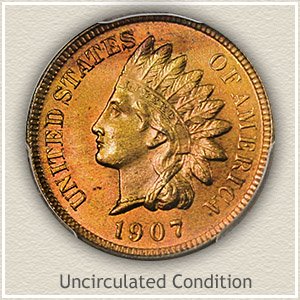1907 ONE PENNY - 1d KING EDWARD VII RARE COIN THIS IS A ONE PENNY, THAT HAS BEEN CIRCULATED. IT HAS A LEGAL TENDER VALUE OF A 1 d. The coin will be supplied in USED condition. The Photo is of the ACTUAL coin you will receive. VERY COLLECTABLE. POSTAGE CAN BE COMBINED ON MY ITEMS, CONTACT ME TO SORT OUT THE CORRECT PRICE FOR YOU. The 1907 penny was minted in Philadelphia so you might have noticed that it has no mint mark. There were approximately 108,137,143 produced that year and they have a melt value of $0.0188. This bronze composite cent was designed by the engraver James B Longacre and is made of 95% copper and 5% Tin & Zinc.
The British pre-decimal penny coin, abbreviated as 1d (from 'denarius' - the Roman coin from which the penny is directly descended), was a unit of currency that equalled one two-hundred-and-fortieth of a pound sterling (there were 20 shillings to a pound, and 12 pence to a shilling so one pound was equal to 240 pence).
The denomination continues the tradition of earlier penny coins of Great Britain, which also featured the figure of Britannia. The bronze coins of these specifications replaced the larger copper pennies which were issued until 1860. The new, more durable, alloy was composed of 95 parts of copper, four of tin and one of zinc. Between 1860 and 1895, the penny had the third Britannia design on the reverse, and Queen Victoria's 'Bun Head' effigy. In 1895, the reverse was updated to this fourth Britannia design - which is a simplified version of the earlier design by Leonard Charles Wyon, and the obverse to the Queen's 'Veiled Head' portrait. Unlike the smaller denominations, which were redesigned for the new coinage of King George VI in 1937 (see the Ship Halfpenny and the Wren Farthing), the penny did not get a new design and retained the classic Britannia reverse until the end.

How Much Is A 1907 Penny Worth
During the reign of King George V, the mint had issues with the monarch's portrait by Sir Bertram Mackennal. Many of the bronze blanks used for the coins were produced by private firms in Birmingham. A great deal of difficulty was encountered in striking coins of this design. The high relief portrait caused a displacement of metal, called 'ghosting', that showed through on the reverse side as an incuse outline of the head. A new bronze alloy was adopted in 1923 in an effort to remedy the situation. It consisted of 95.5 per cent copper, 3 per cent tin and 1.5 per cent zinc. This alloy has a more golden tint than the former one. It lessened the hardness, enabling the coins to be more easily struck and lengthened the life of the dies. During 1925 the features of the design were slightly modified to further help eliminate the 'ghosting', but this fault was not fully corrected until 1928 when a new design, with a smaller head, was introduced. The coins with the modified effigy from late 1925 and thereafter all have the designer’s initials in small letters without periods.
1907 Penny Bronze
One penny coins issued in 1907 remained in circulation for 64 years until 'Decimal Day', 15 February 1971 when the old currency was demonetised and the decimal Pound Sterling was introduced, with a new decimal penny replacing these old coins.